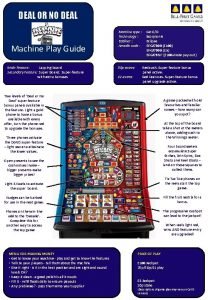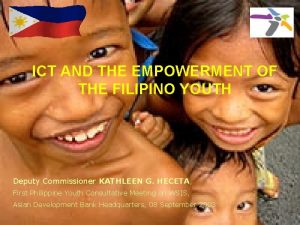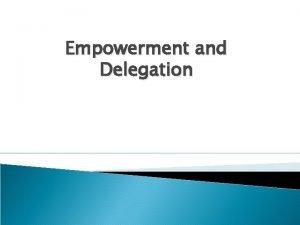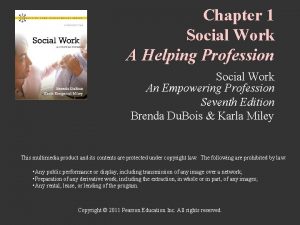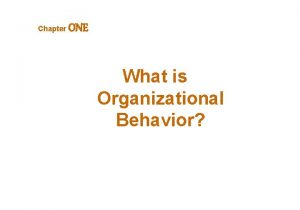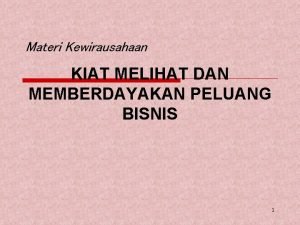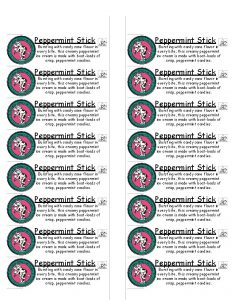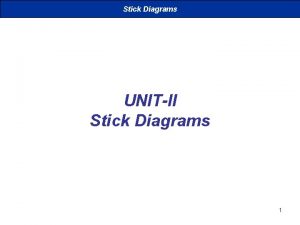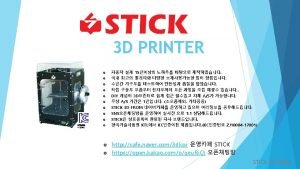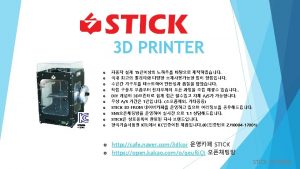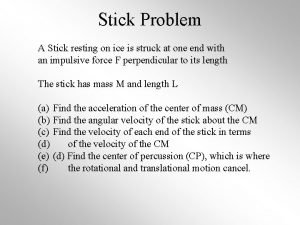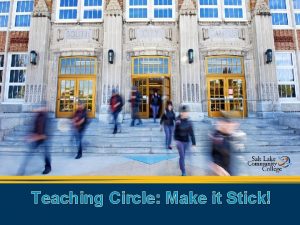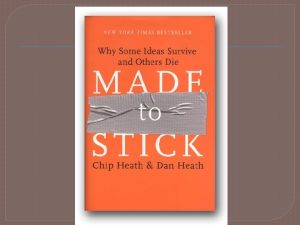After the stick Empowering educators to deal with












- Slides: 12

After the stick: Empowering educators to deal with discipline in high-risk secondary schools without resorting to violence Sharon Johnson Ph. D Psychology (Stellenbosch) Supervisor: Prof Tony Naidoo

Social revolution � What progress in education since democracy? � School to university to job system is failing SA society. � We are suffering from “emotional and social illiteracy” where emotions triumph over logic, reason replaced by wrath and where books take second place to rocks (Jansen, 2012). � No short cuts to changing society – we need to place education at the centre for change, confronting the rot in the school system.

Teaching context � Learner killed in gang crossfire � Weapons brought to school � Teacher glued to his chair � Fire started at school � Bomb scares disrupted classes � Teacher throttled a child in a fit of rage � 13 year old learner accidentally shot dead by his father � Pupil pulled a gun on headmaster and teacher

Teacher comment “I am not so negative about my work because you have a role to play. Learners have become very aggressive, you know they question you, they don’t take very well to authority, especially the Grade 8’s – it’s a difficult stage where they are at…In the past I did have a stick, but this year I have not used the stick; just once. If you hit a child there are repercussions, so I don’t want to go there. I try to use my voice when I can and I think that is where the burnout comes in a lot of the time…what it is doing to me physically. ”

Crisis in the profession � SA teaching profession in a crisis � Severe shortages of teachers � High absenteeism and resignation � High levels of stress related diseases such as high blood pressure and diabetes

Brain responses to threat � Social and physical pain produce similar brain responses for distress � All threat will be interpreted and magnified by learners � SCARF (Rock, 2009) : status; certainty; autonomy; relatedness and fairness � Three brain model – physical response first, emotional response and finally rational response

Research Design - Overview of Mixed. Methods Research Methodology Schools Interventions School 1: TRE 17 educators Trauma Release Exercises (TRE) School 2: TP 16 educators Transpersonal Psychology (TP) School 3: TA 10 educators Transactional Analysis (TA) School 4: Control - 20 educators Qualitative methods Focus group: thematic analysis Quantitative methods Statistical analysis: Perceived Stress Scale Burnout: Personal, Work and Client (Learner); Well-being Coding analysis: Workshop assessment questionnaire and appreciative inquiry reflections on stressors

Demographic details of educators � 63 took part – 20 in a control group; the rest in three high schools on the Cape Flats � Both sexes equally represented: 32 men; 31 women � Most were married (76%); most were Christian (65%); � Most were aged between 40 and 50 years. � 65% reported themselves to be burnout � Burnout is emotional exhaustion, depersonalisation and lack of personal accomplishment with unmet needs.

Intervention design � Physical response: Trauma Release Exercises (Berceli, 2007) – neurogenic tremors � Emotional response: Transpersonal Psychology in Capacitar workshops (Cane, 2000) – heart coherence � Rational response: Transactional Analysis (Berne, 1961) – social psychology

Findings � Statistical analysis revealed that stress and learner burnout reduction were significant in the TRE and TA interventions, pre- to post tests, with TP showing a trend of reduction. � Multiple benefits on a physical, emotional and rational level for all interventions. � Classroom competence improved, with educators taking responsibility for discipline � Violence was no longer considered an option in any of the classrooms after the interventions.

Conclusion � Violent behaviour between educator and learners in the gangland schools of the Cape Flats was positively affected by teachers attending psycho-educational workshops over a relatively short period of time (10 weeks, 15 hours in total), with simple insights and techniques which can be taught relatively easily. Whether these are physical, emotional or rational ways of working with educators, all are effective and can be combined for optimal effect.

Thank you � For further information please contact: � Sharon Johnson: shajohnson@mweb. co. za � 072 2644140 References: Berceli, D. (2007). Evaluating the effects of stress reduction exercises. Unpublished doctoral dissertation, Arizona State University Berne, E. (1961). Transactional analysis in psychotherapy. New York: Grove Press. Cane, P. M. (2000). Trauma healing and transformation. California: Capacitar int. Jansen, J. (2012, January 7). Matric razzmatazz conceals sad reality. Weekend Argus, p. 4. Johnson, S. M. (2013). Impact of stress and burnout interventions on educators in igh -risk secondary schools. Doctoral dissertation, University of Stellenbosch Scaer, R. C. (2007). The body bears the burden: Trauma, dissociation and disease (2 nd ed. ). New York: Norton.
 Deal or no deal machine
Deal or no deal machine Rudolf vizental
Rudolf vizental John 14
John 14 After me after me after me
After me after me after me Youth empowerment meaning in tagalog
Youth empowerment meaning in tagalog Empowering people in ob
Empowering people in ob Empowering the masses
Empowering the masses Empowering minds curriculum
Empowering minds curriculum Empowerment and delegation
Empowerment and delegation Social change in social work
Social change in social work Basic ob model stage 2
Basic ob model stage 2 Empowering imagination
Empowering imagination Bagaimana pemberdayaan peluang usaha yang baik
Bagaimana pemberdayaan peluang usaha yang baik
